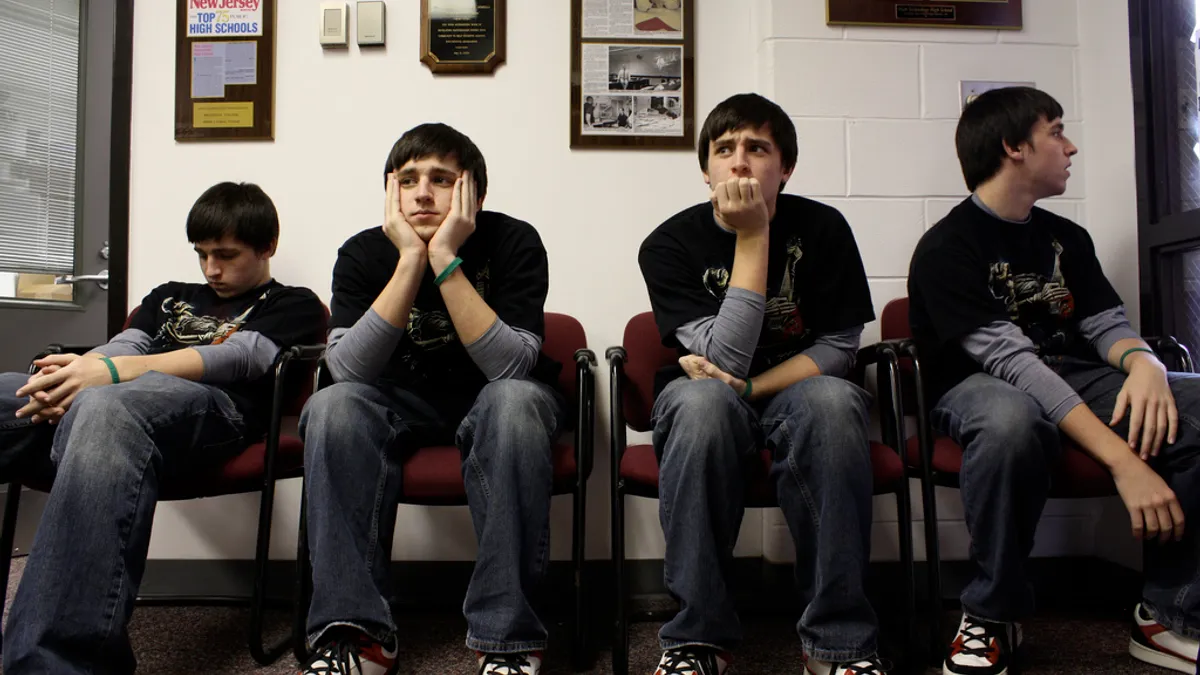Dive Brief:
- Following controversy over suspension lengths that sometimes lasted as long as a year, the average length of suspensions in New York City fell roughly 30% in the time period from July 2018 to December 2018 compared to the same time period the previous year, Chalkbeat reports.
- Some of the biggest reductions have come from “superintendent suspensions” — longer suspensions lasting six or more days, assigned for more serious infractions — and affect students of color more, as these suspensions have been reduced by 40% for black students and 32% for Hispanic students. Discipline reform advocates have pushed for changes amid findings that students of color were more likely to receive longer suspensions and have their learning outcomes affected as a result.
- NYC school officials are now looking more closely at the average suspension time assigned for a specific infraction and are actively reviewing discipline decisions that fall outside of that range, but previous attempts to reform the discipline code have been fraught with controversy as attempts to limit suspension powers have created more discipline problems in classrooms, and staff members have not received adequate training on using restorative practices effectively, according to critics.
Dive Insight:
Classroom management and school discipline are major areas of concern for educators because they are imperative to creating a setting conducive to learning. Students who disrupt class do themselves and their fellow students a disservice by stealing valuable instructional time. However, finding the right approach to dealing with these students has always been a challenge. While removing them from the classroom setting by suspending them solves one set of problems, it creates a host of others for the disciplined student, who most likely needs more support than his or her peers.
Suspension rates and lengths have been the focus of many discipline reform efforts as more studies examine the effects of such suspensions on the students affected by them. Higher suspension rates have been linked to lower attendance rates, test scores, and graduation rates and to increased drug use. These suspension rates, which often are higher for students of color, have also been linked to the school-to-prison pipeline because they set up a pattern of failure and limit opportunities. And some studies even suggest that unusually high suspension rates at school have a negative effect on academic achievement for well-behaved students, perhaps because of the school climate created in these situations.
The gathering and analysis of accurate data surrounding school discipline seems to one of the biggest factors in improving the situation. Because discipline can often be a stressful, emotional and reactive situation, data helps bring the situation in perspective by providing a quick review of past offenses by the student, past interventions (or lack of them), and average suspension sentences related to those offenses.
There are several types of student behavior/discipline software available that can track behavior, referrals, punishments, and even attendance and tardiness. This data can help school officials identify repeat offenders earlier so they can be targeted for additional support measures that may prevent larger offenses later. For students who need stronger forms of discipline, these records can also support the need for longer suspensions or other measures.
Schools are also finding that more proactive and positive approaches to discipline can help head off some troubles and reduce suspensions while creating a more positive school climate in the process. While the needs of students who are intent on learning need to remain in the forefront, the needs of disruptive students cannot be ignored and need to be addressed before they create larger problems for themselves and for society as a whole. Clear communication about expectations and consequences, and the creation of strong personal relationships with students who need extra support, can go far in this process.






 Dive Awards
Dive Awards







